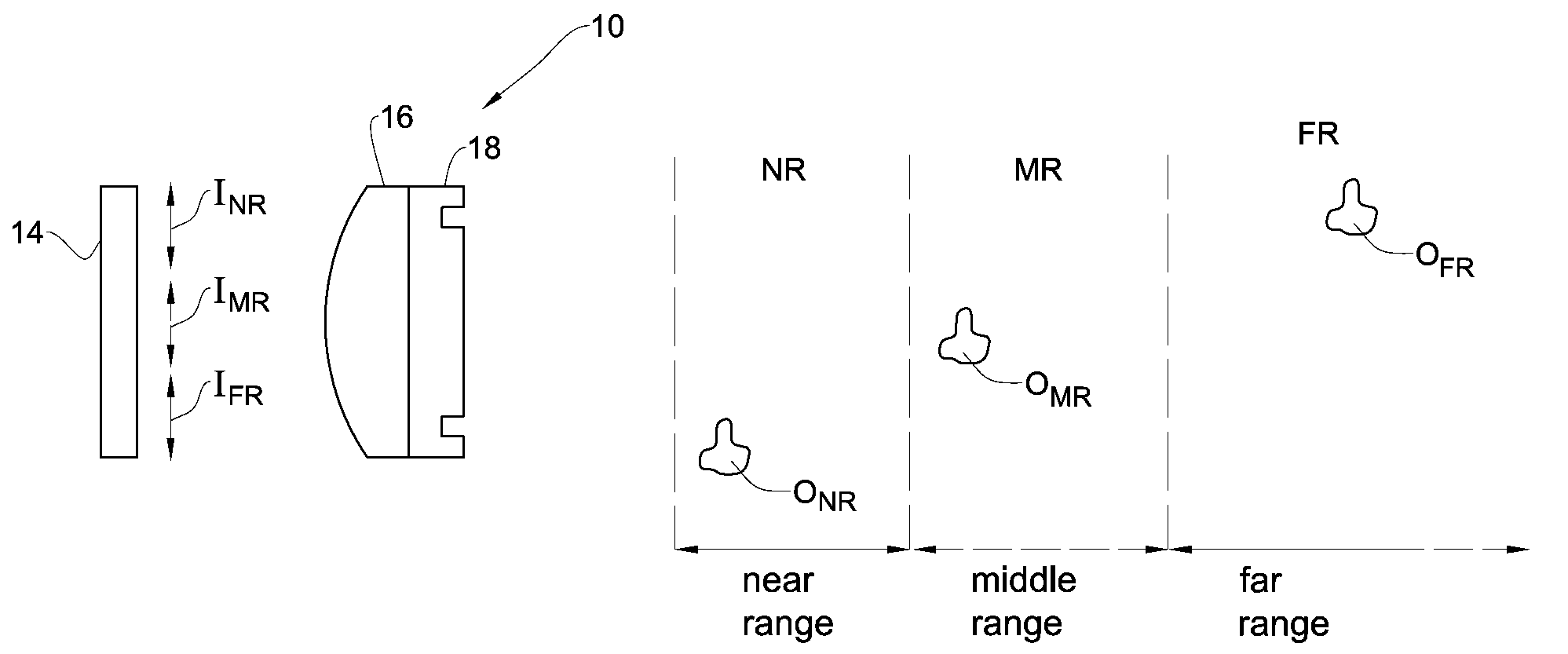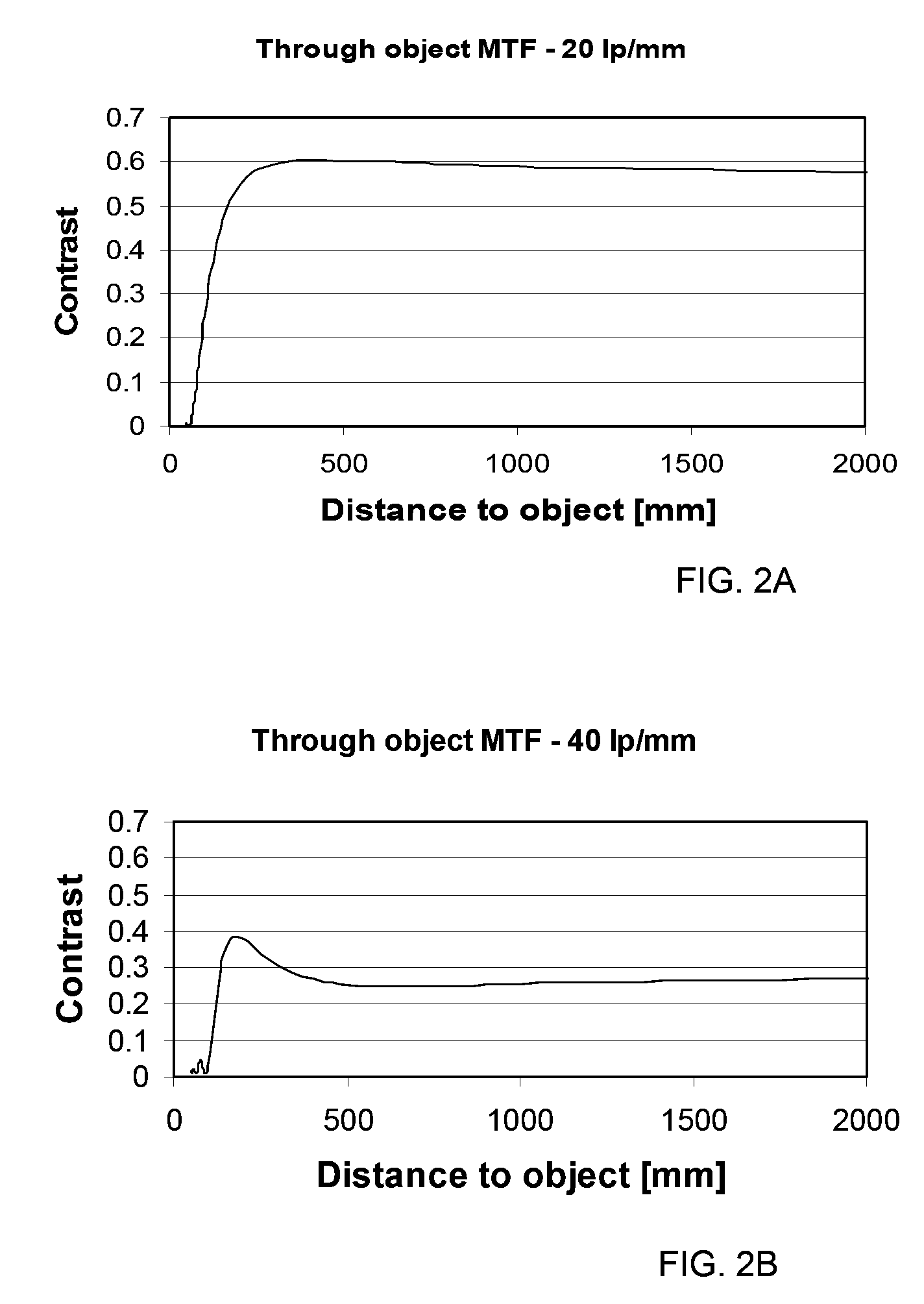Optical system and method for multi-range and dual-range imaging
a multi-range and dual-range imaging technology, applied in the field of imaging techniques, can solve the problems of inability to focus or focus well, inability to focus well, so as to achieve cost-effectiveness, facilitate fabrication, and facilitate the effect of further fabrication
- Summary
- Abstract
- Description
- Claims
- Application Information
AI Technical Summary
Benefits of technology
Problems solved by technology
Method used
Image
Examples
Embodiment Construction
[0109]Reference is made to FIG. 1, exemplifying an imaging system 10 suitable for use in multi-range imaging of object scene by incoherent light. The imaging system includes a phase mask section 18 and a single focus lens section 16, and is associated with a light sensitive surface 14, which is a pixel detector array (PDA) in the present example (and would be the eye retina in the ophthalmic applications). The phase mask section has a generally non-diffractive, narrowly bounded, phase variation corresponding to a characteristic profile of a through-object Modulated Transfer Function (MTF) of imaging system 10. The characteristic profile appears at an at least one non-zero spatial frequency and has at least two regions of growth leading to the MTF higher than 10%. Examples of the characteristic profile are presented in FIGS. 2A-2D, 9A-9K, 10A and 10B, 11A-11H, 12A-12H, 13A and 13B, and 14A and 14B, which are described in detail below.
[0110]As the phase mask is generally non-diffracti...
PUM
 Login to View More
Login to View More Abstract
Description
Claims
Application Information
 Login to View More
Login to View More - R&D
- Intellectual Property
- Life Sciences
- Materials
- Tech Scout
- Unparalleled Data Quality
- Higher Quality Content
- 60% Fewer Hallucinations
Browse by: Latest US Patents, China's latest patents, Technical Efficacy Thesaurus, Application Domain, Technology Topic, Popular Technical Reports.
© 2025 PatSnap. All rights reserved.Legal|Privacy policy|Modern Slavery Act Transparency Statement|Sitemap|About US| Contact US: help@patsnap.com



